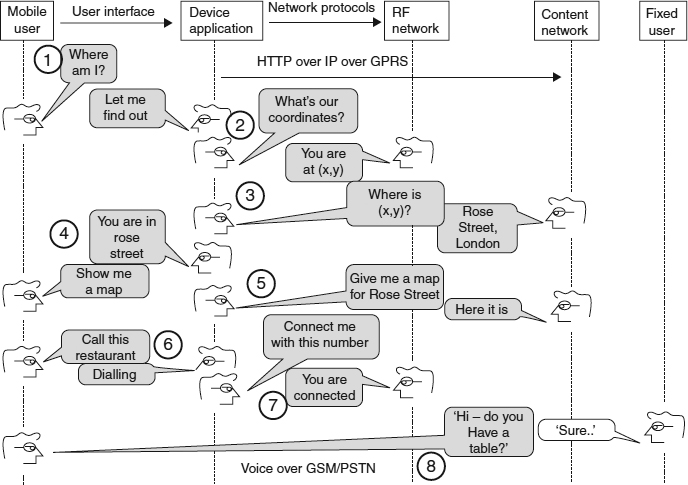4.3 MAPPING THE INTERACTION TO THE NETWORK MODEL
In any of the identified modes of interaction, as our diagram in Figure 4.3 indicates, there are at least two end-points, sometimes more (as in group chat applications, videoconferencing and the like). As the diagram also shows, we can imagine that the end-points are participating sources of activity and information; they each have something to ‘say’ to each other, and so, in that sense, they can be viewed as actors in a sequence of events that takes place to complete meaningful tasks within the mobile context. The use of the term actors will be valuable in the following discussions, as an anthropomorphic9 generalisation of entities as ‘people’ that can talk to each other is a useful analytical technique. Actor is also a term that crops up in formal software analysis techniques, like the increasingly popular UML10 notation.
Importantly, the sequence of events and participating actors is not confined to the two endpoints, which themselves may change throughout the life cycle of the service. As Figure 4.3 shows, quite elaborate interactions can arise during the life cycle of a single session of tasks carried out by the mobile user. It is worth dwelling on this example sequence chart11 as it uncovers a lot of the issues that we need to address in building our mobile services.

Figure 4.3 Sequence of events and participating actors in ...
Get Next Generation Wireless Applications: Creating Mobile Applications in a Web 2.0 and Mobile 2.0 World, 2nd Edition now with the O’Reilly learning platform.
O’Reilly members experience books, live events, courses curated by job role, and more from O’Reilly and nearly 200 top publishers.

